Singapore - A Small Country, but a Great Success
![]()
On the 9th of August, 1965, Prime Minister Lee Kwan Yew made a televised speech to the Singaporean people to explain that Singapore had been ousted from the Federation of Malaysia and, perhaps unwillingly, would become an independent nation. The Republic of Singapore was born.
At the time, the barriers to becoming a successful nation seemed to be insurmountable. The island lacked natural resources and depended on Malaysia for fresh water. The multicultural population of Malay, Chinese, Indian, and others including other Asians and Anglos, lacked a Singaporean identity that would bring people together. Creating a nation would require extraordinary actions.
Now, fifty-four years later this tiny city-state has achieved astounding economic success and a high standard of living that other countries seek to emulate. They also have united the population as Singaporeans and created a place for them to call 'home'. We were anxious to learn more.
As the taxi drove us from Changi Airport to our hotel, we began to observe the clusters of handsome and stylish high rise apartment buildings with well kept exteriors, each with a town center and lush greenery and open space.
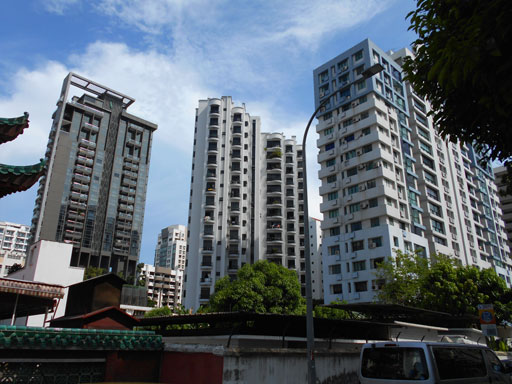
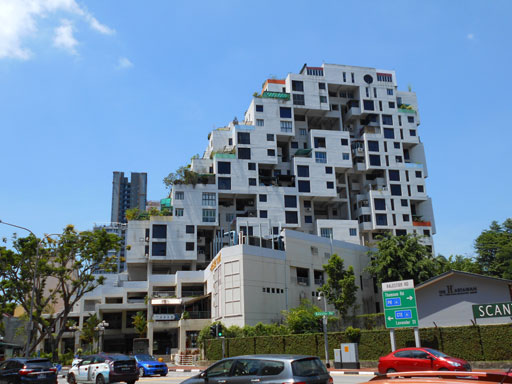
Nationwide Master Plan
To learn more about what we later learned were 'new towns', we headed to the Singapore City Gallery where we discovered that the 2019 update of the National Master Plan was about to be finalized, an important event for Singapore. We also found that the Gallery was holding a special exhibition to present the plan to the public - a wonderful find for a couple of Nomad Urbanists!
As we studied the Master Plan displays, we learned that 85% of the households live in public housing estates, mostly in high rise buildings, and own their flats. The housing estates are clustered in New Towns around a bus and Mass Rapid Transit (MRT) center, a mall and community center, library, parks, and a food center offering cooked food at low cost. We later learned that the hotel where we were staying was in Toa Payoh, the first of these 'New Towns', that also contained the headquarters of the Housing Development Board (HDB).
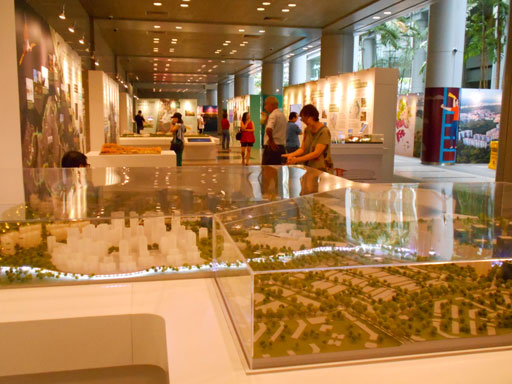
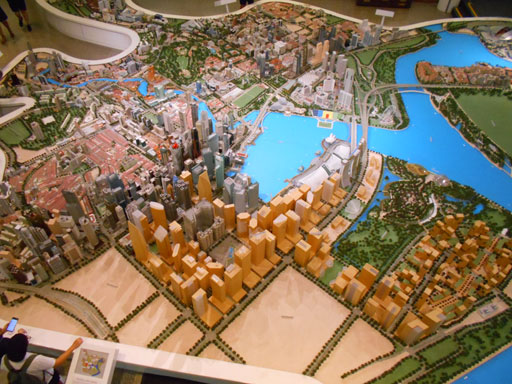
We learned that there are three agencies that together administer and manage most all of the land and housing and urban development in Singapore. The role of the HDB is to implement the national housing program and is essentially the master developer and property manager for the housing estates. The other two are the Singapore Land Authority (SLA) responsible for managing state land, and the Urban Redevelopment Authority (URA) responsible for land use planning and development of the National Master Plan.
For us Urbanists, the concept of a National Master Plan is exciting! Of course, the nation in question is a relatively small city/state, which makes the concept more comprehensible. We have been advocates of land use planning as an essential element to achieve People Friendliness. But Singapore has taken planning to a new level.
We also learned that in 1989, Singapore implemented the Ethnic Integration Policy, that sets ethnic quotas for each HDB estate. The Deputy Prime Minister explained that where you live matters more than experts imagine. Ethnic integration creates communities that reflect the ethnic mix of the country and thereby prevents clustering of one group in a neighborhood. This means that kids of all ethnicities go to school together and play together. Neighbors eat meals together in the food center and work out together at the fitness center. With this model, all residents are simply Singaporeans and ethnicity is essentially a non-issue.
Mobility
Singapore's Public Transport system was planned and has evolved to provide readily available transportation for all the people in Singapore to travel between the 'New Towns' and elsewhere in the country. It is based on a network of above and below ground rail, the Mass Rapid Transit (MRT) lines, along with buses to complete the network. All are operated with short headways, early and late service. All are modern, safe, clean and economical. Yet, we were surprised to see that many people drive their private cars, so that there are many SOV's and taxis galore with occasional traffic jams. Plentiful parking structures and underground parking make it perhaps too easy to park. There are some bike lanes and more are being added. The pedestrian environment is good with wide sidewalks well maintained and often shaded. Traffic lights at crossings give priority to pedestrians, too. Jay walking is firmly discouraged!
Natural World Connections
The 'City in a Garden' has been Singapore's constant theme since it's founding, and today the first impression of a visitor is "It's SO GREEN!". In fact, they have a National Parks Board that cares for 350 parks and 4 nature reserves. They have active programs to conserve sensitive habitats such as mangroves, coral reefs, and even old growth rain forest. The Botanic Gardens offer locals and visitors opportunities to learn about the botany of the island, to admire native plants including a rain forest, to marvel at the orchid garden, and to stroll along paths and rest in the shade. We spent a lovely day there and are certain that we'll return on a future visit to Singapore.
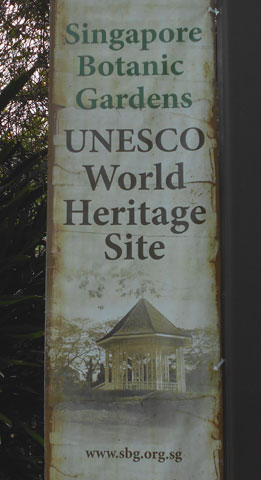
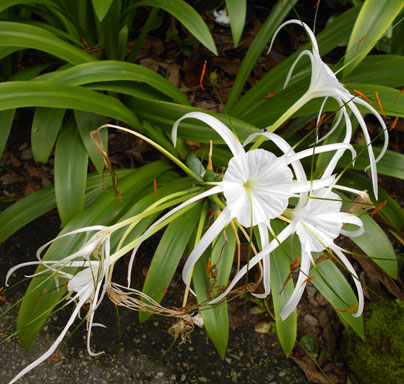
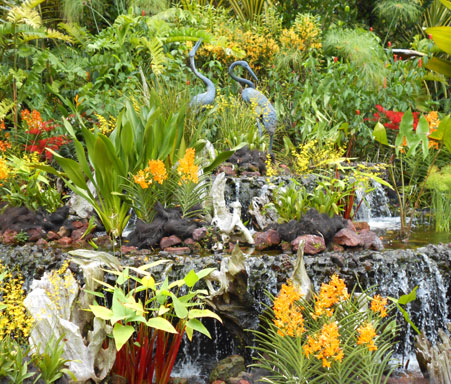
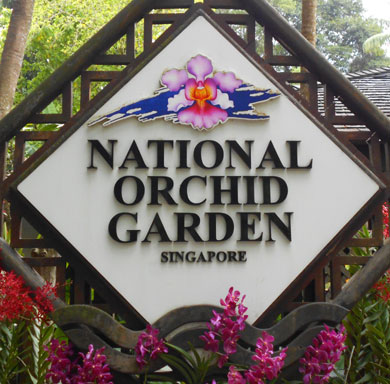
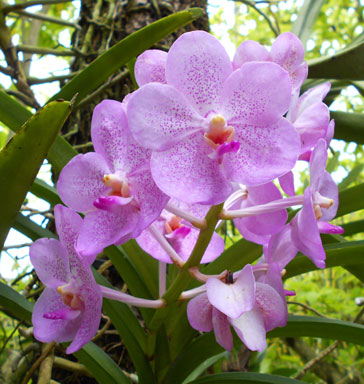
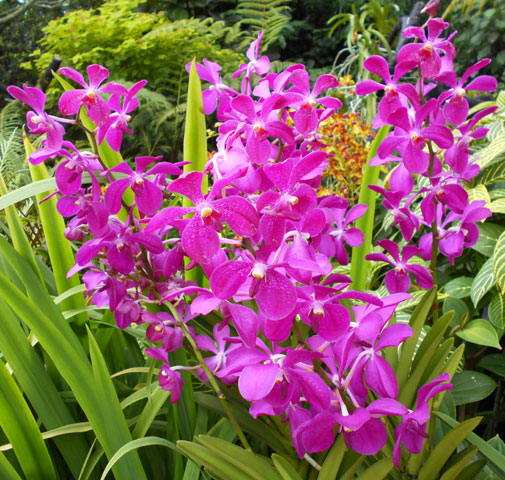
We also learned that there are over 1300 community gardens in pockets of greenspace throughout the nation involving thousands of families in gardening to provide fresh foods for people as well as habitats for birds, bugs and other critters.
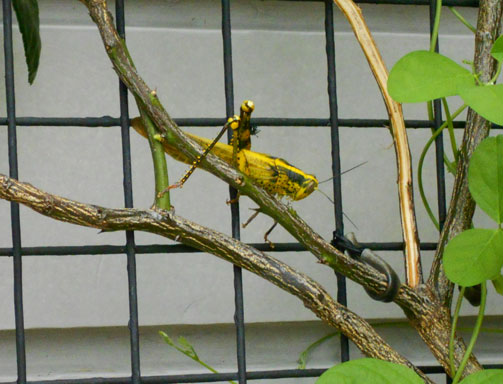
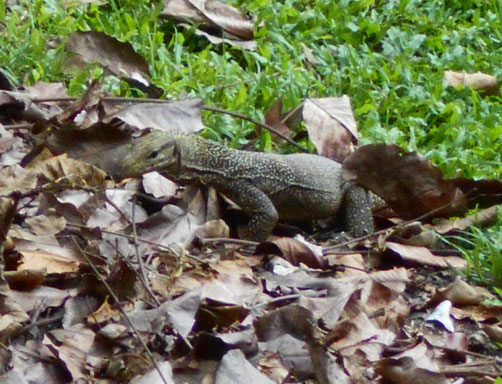
Many parks are connected to each other by park connector trails like this one along the Kallang Canal. Singapore has more vibrant Natural World Connections than most cities we can recall!
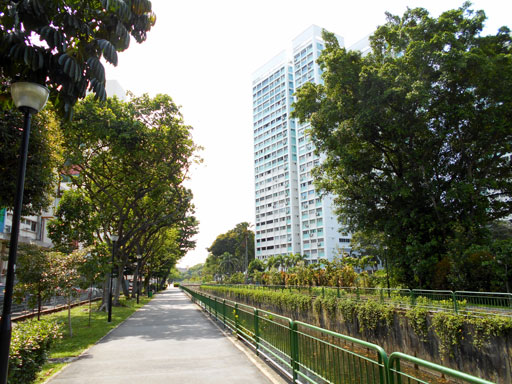
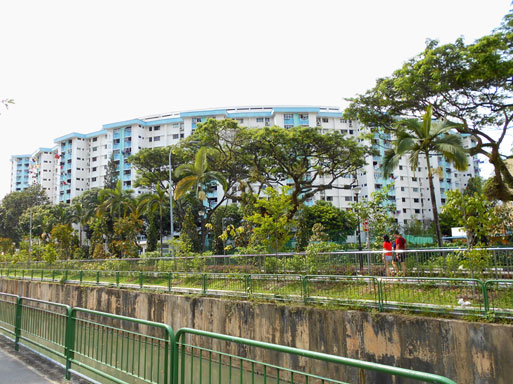
Highlights of Our Visit
During our stay in Singapore we combined exploration of several of the 'New Towns' with visits to museums, galleries, notable places, and historic documentation centers. Then we added a few attractions and meals at several food centers and quays along the river. Walks in the districts of restored traditional shop houses and through a few glitzy malls completed our explorations. We'll focus on the highlights.
Marina Bay Sands Hotel and Gardens by the Bay
The iconic three towers topped by the SkyPark has become Singapore's trademark attraction, so we had to visit.
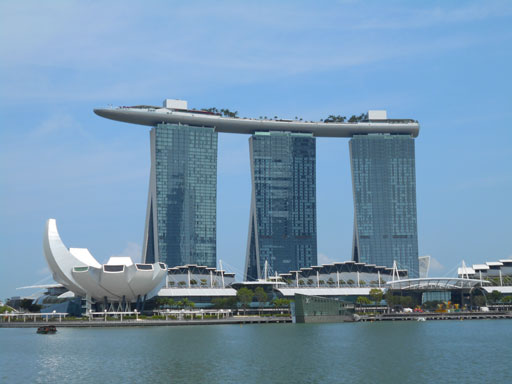
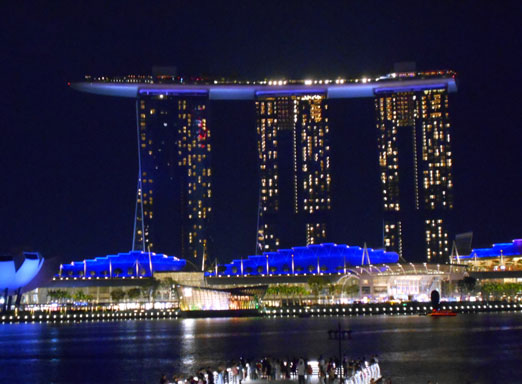
After walking across the Helix Bridge, which resembles a DNA molecule, we first entered the Shoppes at Marina Bay Sands, a mall of maximum glitz and home to all the big international purveyors of expensive stuff of all categories. Interestingly, it is also a destination for ordinary people to stop for a meal at the Food Centre and a stroll past the store windows.
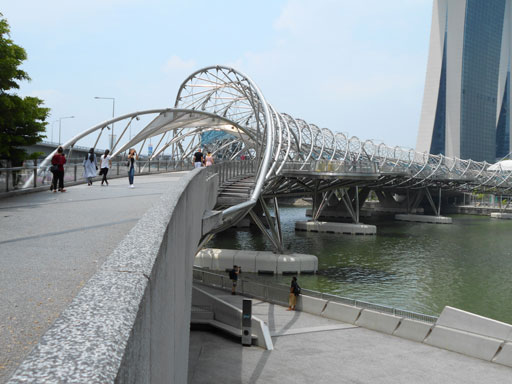
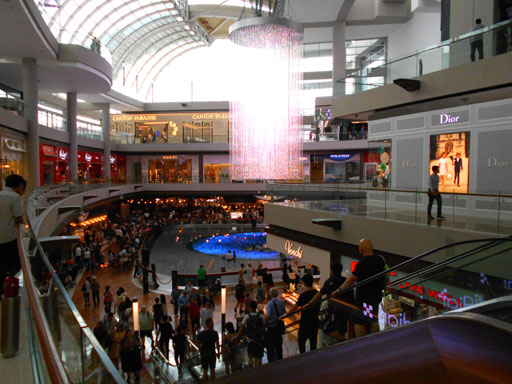
From there, we entered the atriums of the hotel soaring up to the walkways fronting the rooms, and the views up the towers to the SkyPark far above us.
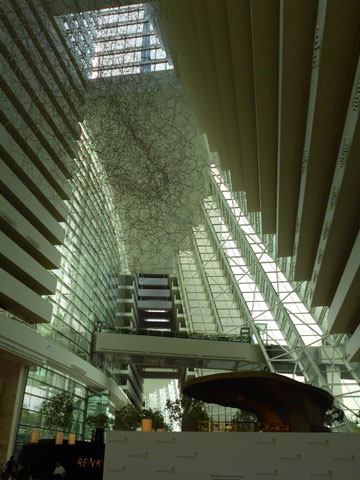
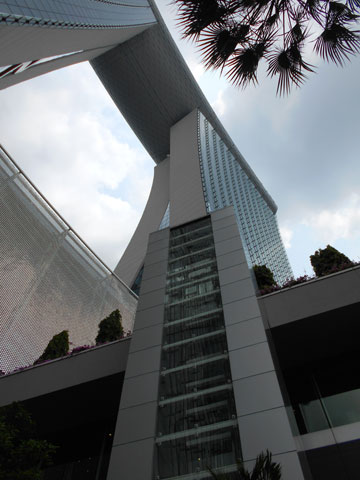
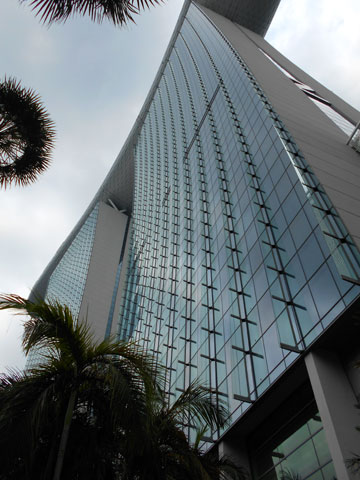
Finally, an elevator whisked us up 56th floors to the SkyPark, the surfboard shaped deck that connects the three towers, for amazing views in all directions....
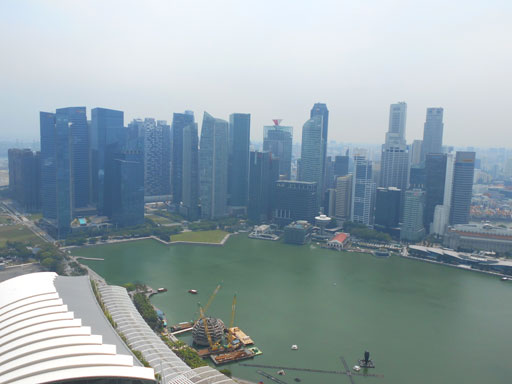
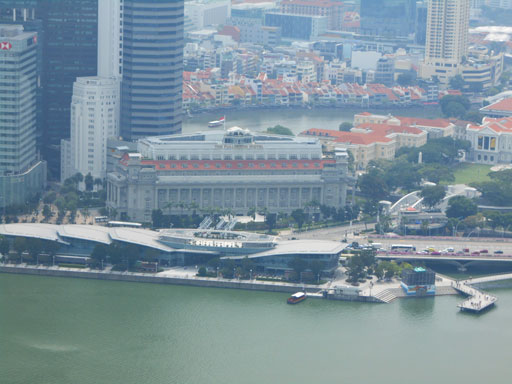
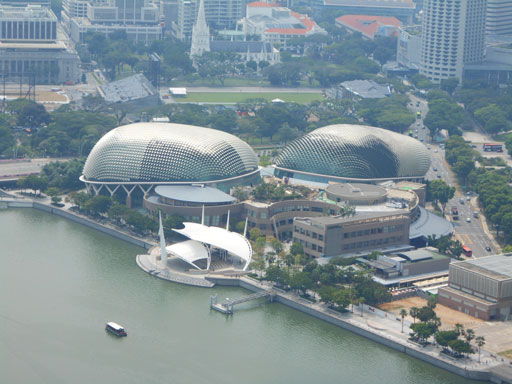
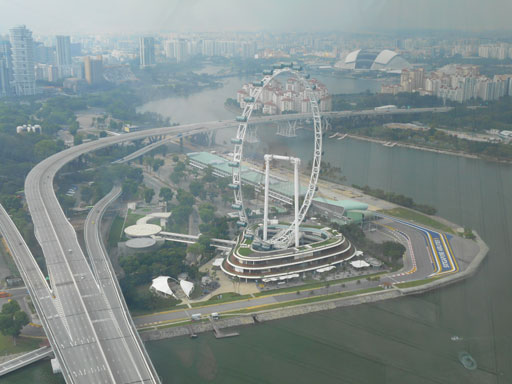
... As well as views of hotel guests enjoying a swim in the rooftop Infinity Pool.
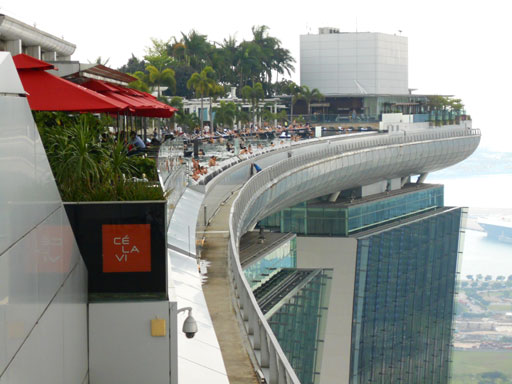
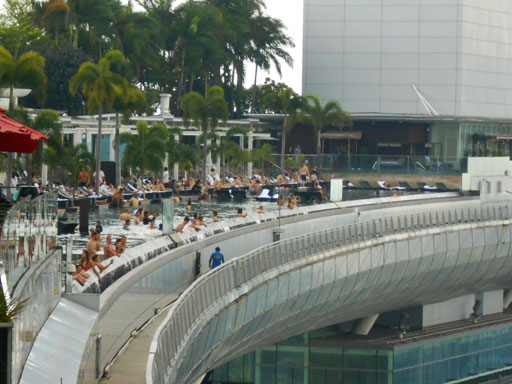
Another day, we returned to visit the Gardens by the Bay that we had viewed from our earlier visit to the MBS Skypark .
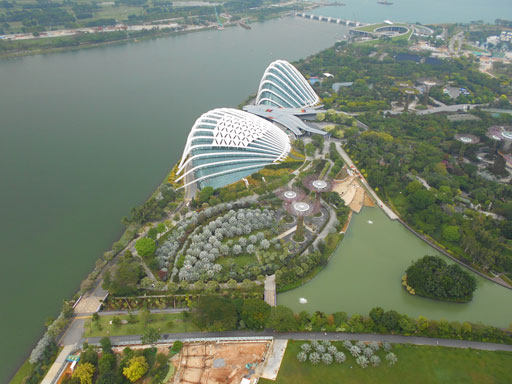
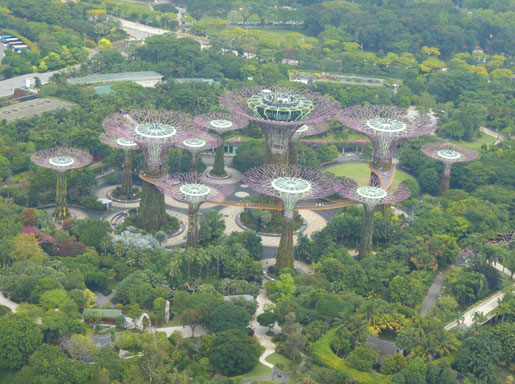
Here lush greenery surrounded two vast conservatories. The first, the Flower Dome offered flowers and desert plants from all over the world, as well as a special exhibit of tulips from Holland.
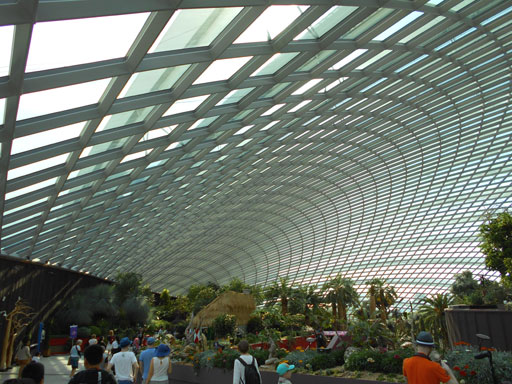
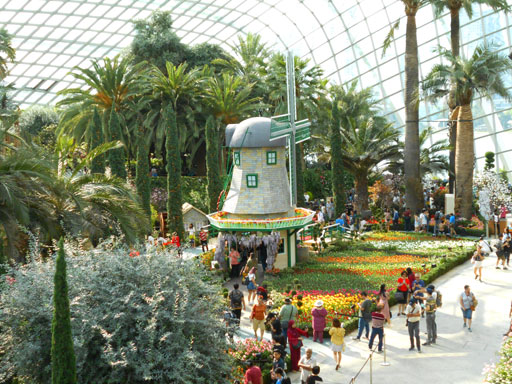
The second, Cloud Forest, offered a great waterfall that increased the moisture to a misty vapor that enabled a broad collection of plants to thrive.
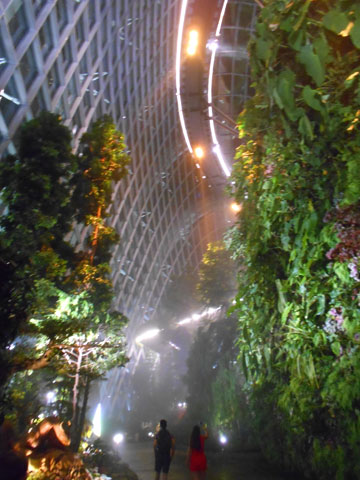
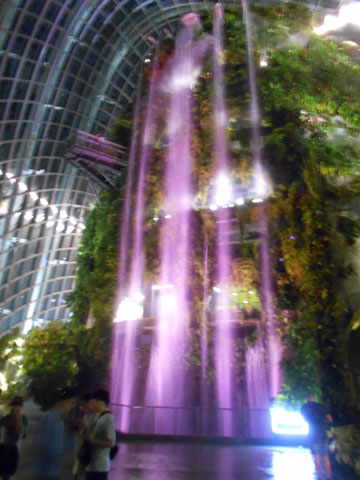
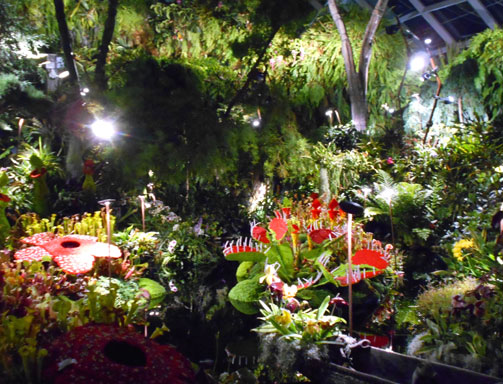
Nearby, we strolled through the Forest of Super TreesI, and later in the evening, after a fine meal of Indian food, we enjoyed the sound and light show.WOW!
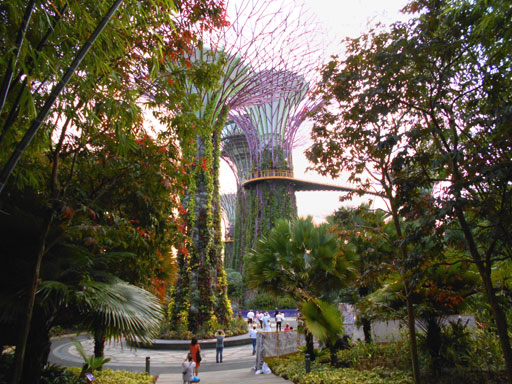
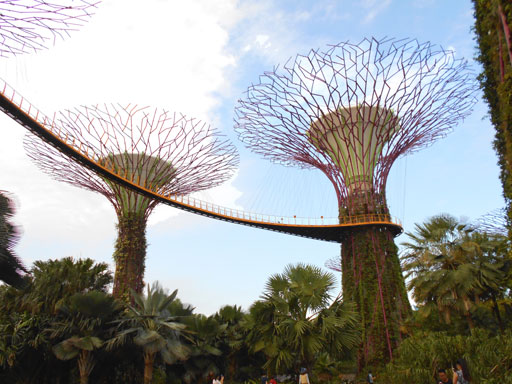
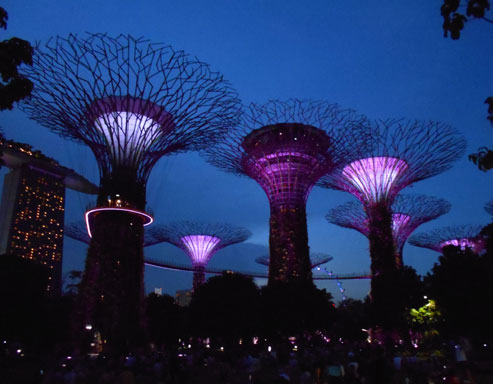
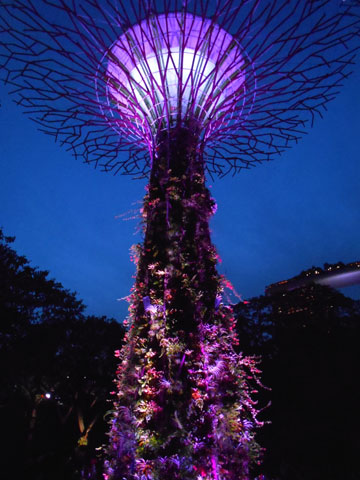
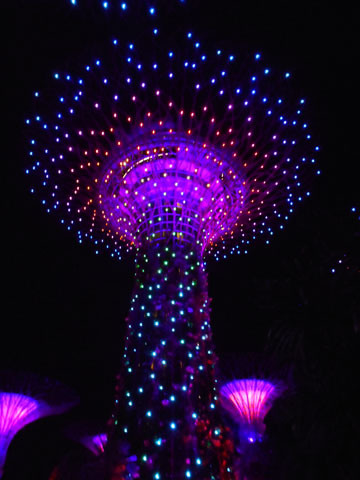
Hawker Centers (Food Centers)
Hawker Centers are, in simple terms, large food courts where hungry patrons come and choose food they want from the many vendors doing business there. They are a uniquely Singaporean institution created years ago as a way to move all the Hawkers of street food off the streets and sidewalks and into a more organized location. The goal of this plan was to eliminate the congestion caused by the Hawkers, and also to improve the food quality and control the sanitary conditions of the vendors.
The typical Hawker Center is in an open-air building under a roof, but in more recent times similar centers have been added in 'new town' centers and shopping malls. In all cases, there are multiple stalls, usually fairly small store front establishments with a sign with images overhead advertising what they offer, and a counter where the customer places his order, pays and very soon collects his food. All the food is prepared in a fairly small area behind the counter and is hot and freshly served. The food offerings are mostly Chinese and Malay, but usually include Indian offerings and perhaps a pizza/pasta shop and 'western food' shop. Some vendors even offer vegetarian dishes. There are also stalls offering juices and even local beer, mostly Tiger in large bottles.
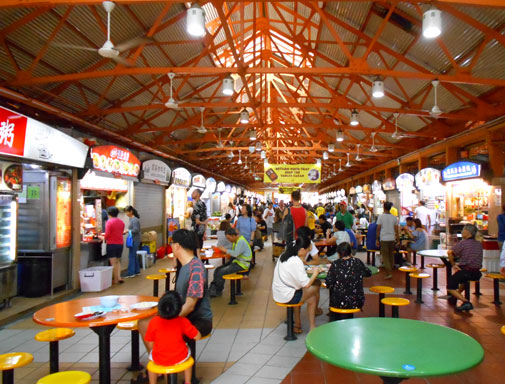
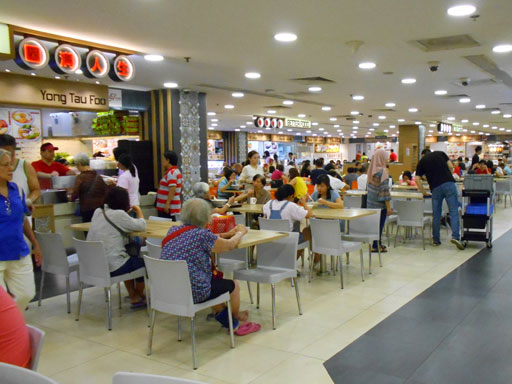
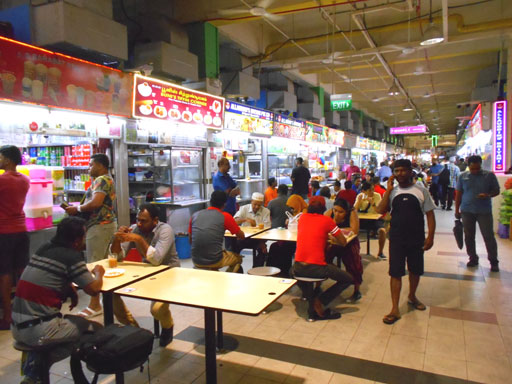
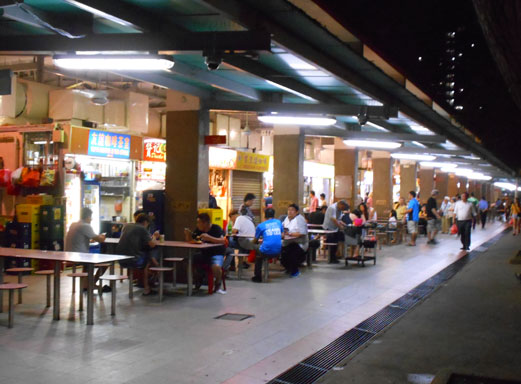
Shophouses
Shophouses are a part of Singapore's colonial history, stretching all the way back to the 18th century. Traditional Shophouses are two to three story rowhouses, each with a narrow frontage and a sheltered walkway across the front for pedestrians, the 'five foot way'. They have internal courtyards, open stairwells and skylights to bring light and air into the otherwise dark interiors. Usually there is a shop on the ground floor and apartments above.
As Singapore started to grow in the 1960s, many Shophouses were demolished to make way for new developments. Understanding the importance of conserving some of it's heritage, the 1970s and the start of the 1980s saw a complete turnaround in policy to one of preserving these historic structures. In 1986 the URA unveiled their Conservation Master Plan to renovate and restore Singapore's historical areas. We documented typical examples of this unique and typical architectural style as we explored the city.
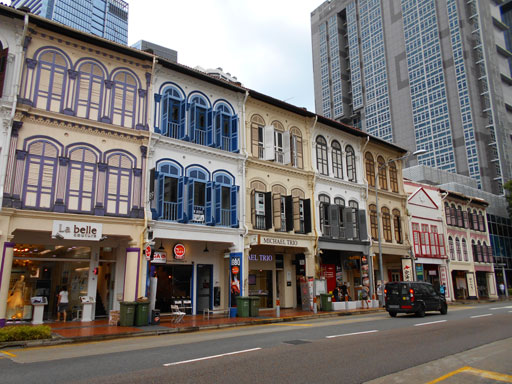
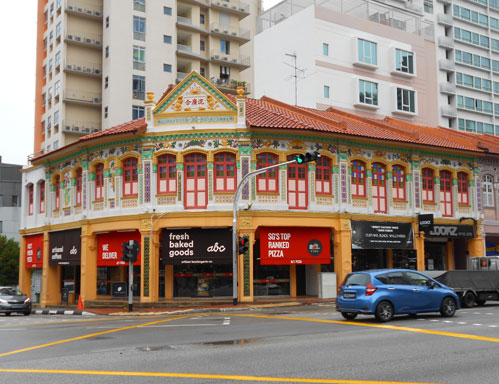
Museums, Galleries, Notable Places and Documentation Centers
Interspersed with our explorations of urban Singapore, these great institutions provided us with the historic and cultural context to broaden our understanding:
National Museum Singapore
The British decided that a museum was an essential element to provide a place where locals and visitors could learn about Singapore. Founded in 1887, the collections of the museum enabled us to learn about the early settlements, the arrival of Stamford Raffles in 1819 on a mission to find a location for a duty free British trading port to facilitate trade worldwide, and the prosperity that derived from Singapore becoming a British Crown Colony (picture at right below). Then the Japanese changed everything when the British lost the Battle of Singapore followed by the grim Japanese Occupation, which ended in 1945 when the Japanese surrendered to end World War II. The post war era continued until 1965, when Singapore became an independent nation.
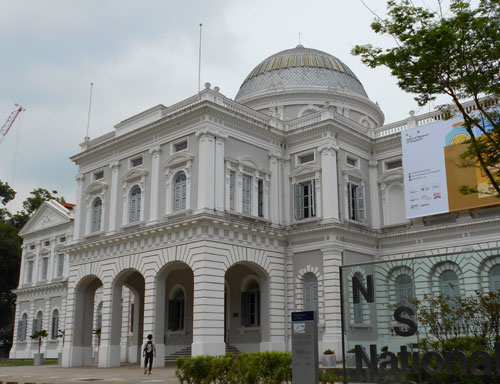
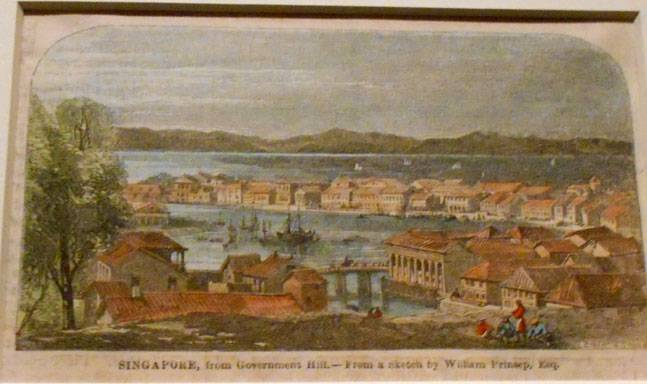
Memories at Old Ford Factory Documentation Center
This is the place where British forces surrendered to the Japanese Imperial Army on 15-February, 1942. The board room where the surrender agreement was signed has been maintained as it was and multimedia presentations bring this distressing and confrontory moment to life. Presentations on the Japanese Occupation and the post war era follow to the moment when Singapore became a nation. All of this is stunning and emotion filled, indeed.
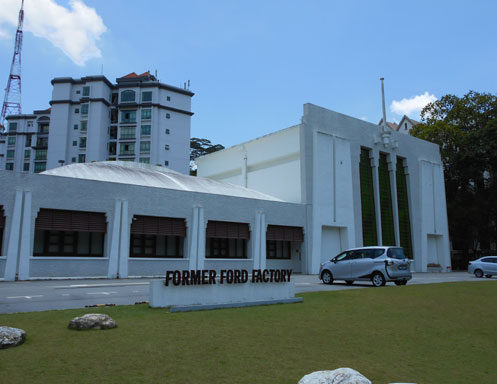

Asian Civilizations Museum
A special exhibition, Raffles in Southeast Asia, brought us to this amazing museum. Stamford Raffles founded British Singapore in 1819 and was responsible for the original town plan and the establishment of the duty free port there. This special exhibition followed the path of Raffles to Indonesia with a focus on Javanese culture derived from his investigations and the two volume, History of Java, that he wrote. The museum collections include much more of great interest including the contents of an Arabic vessel shipwrecked in 830 AD. It's another place for another visit.
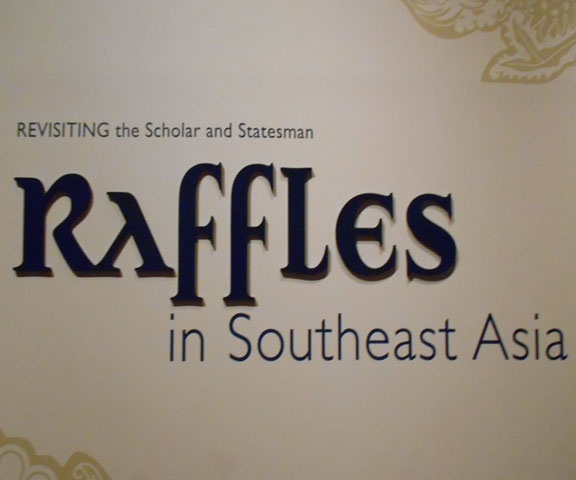
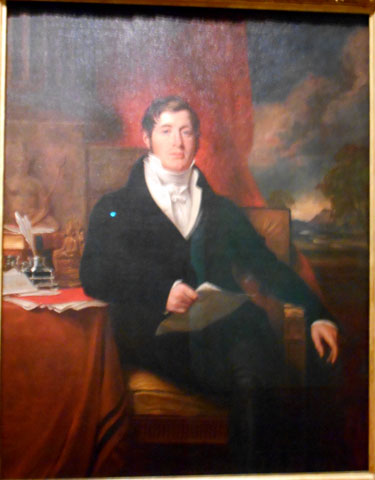
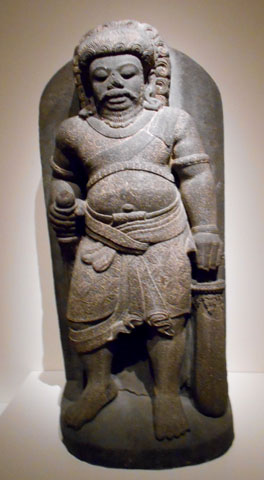
National Gallery Singapore
Situated in two adjoining national monuments, the former Supreme Court Building and City Hall, the Gallery presents an incredibly creative combining and re-purposing of these two great buildings.
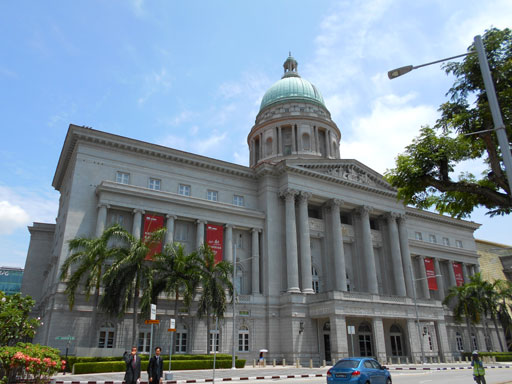
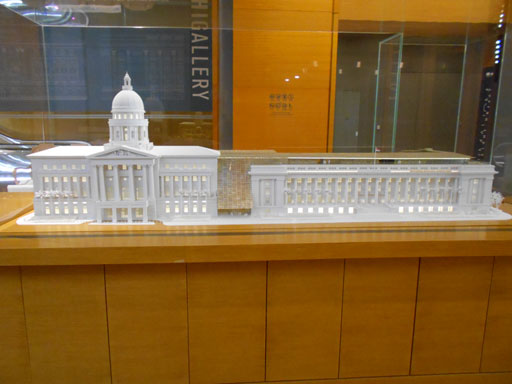
It contains a visual arts collection that covers all of Southeast Asia, and nicely captures the Southeast Asian world view and cultural heritage, and also . . .
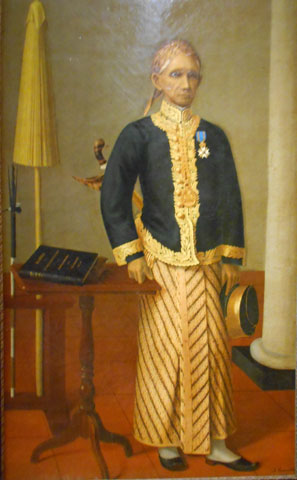

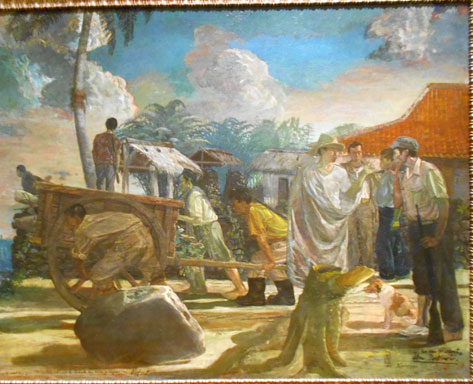
. . . includes historic documents and artifacts, and now including the table on which North Korean leader Kim Jong Un and US President Trump signed their denuclearization agreement in 2018
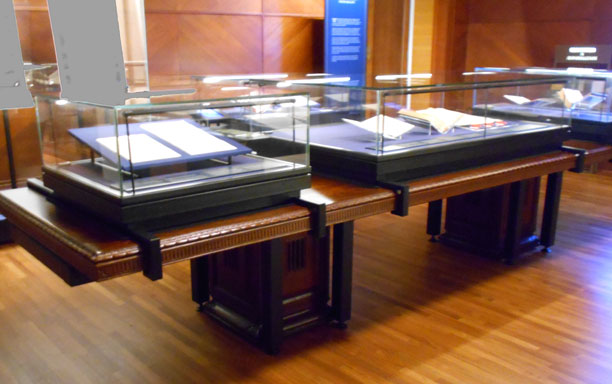
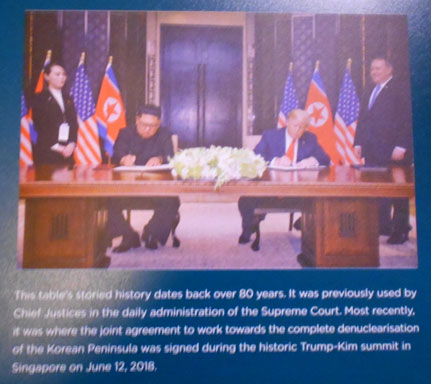
To adequately describe this amazing place is beyond our capacity, other than to say that we spent a captivating day exploring, admiring, and comprehending it. . Knowledgeable guard/guides were always available to offer interpretation and ideas. We felt their love and pride about this place as a special part of the history and culture of their country and homeland.
Churches, Temples, and Mosques
The vitality of the multicultural Singaporean population was evident in their spiritual architecture - Buddhist and Hindu Temples, Mosques and the St. Andrew's Cathedral. We visited the cathedral, a gothic colonial building right in the downtown core of the city. As we explored further, we discovered that there is a Buddhist Temple in most neighborhoods including several in Toa Payoh, our neighborhood. Hindu Temples are eye catching with a tall Gopuram covered with the pantheon of gods. Mosques are also in neighborhoods, reflecting the faith of the Malaysian Singaporeans
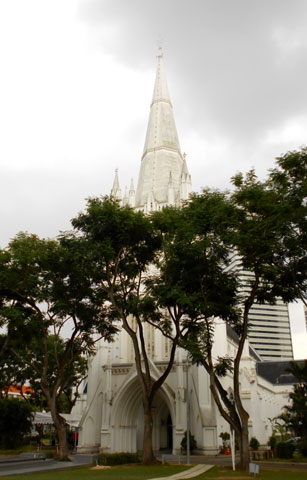
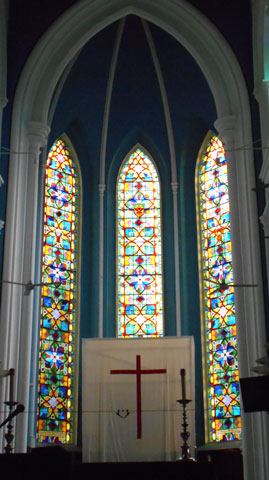
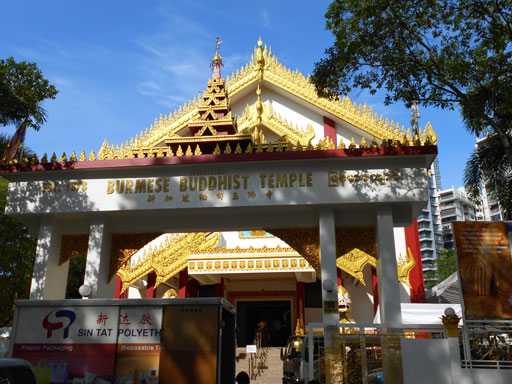
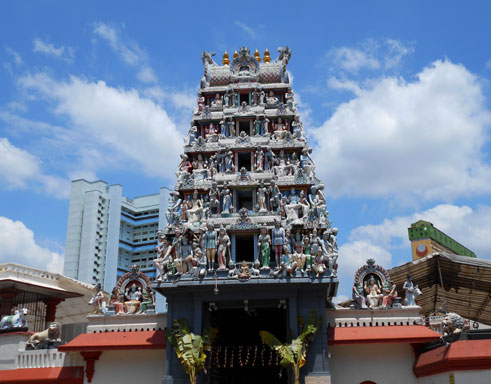
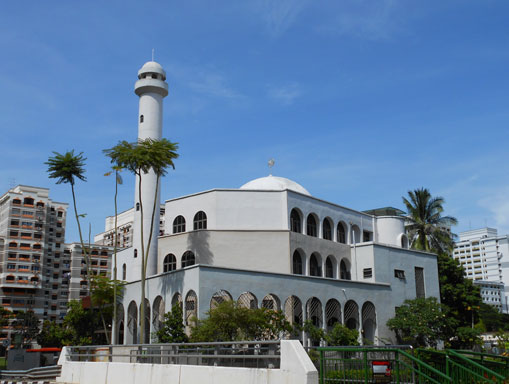
New Towns - Admiralty
Admiralty is a 'new town' near the larger neighborhood of Woodlands on the north side of the island. There is a MRT station, a mall and most recently, Kampung Admiralty, the first integrated public development designed with a focus on comfortable living for seniors. It features a large food market, a food center open to all, a sheltered public courtyard, shops, a health care center, a community center, an interior courtyard with fitness equipment and a children's playground, all in a complex with two eleven story towers of flats.
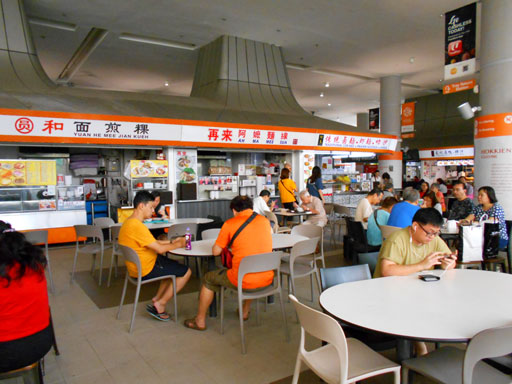
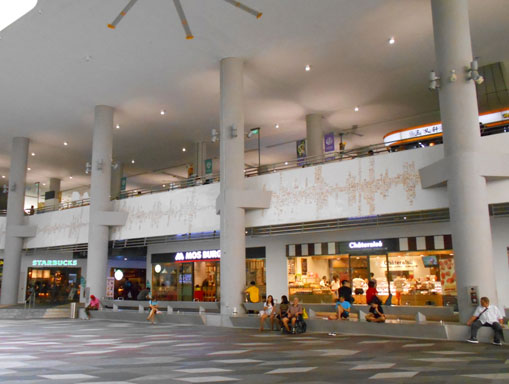
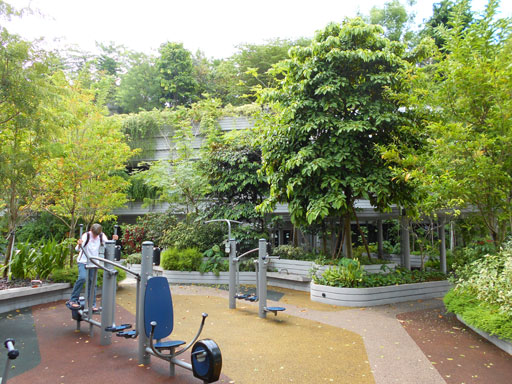
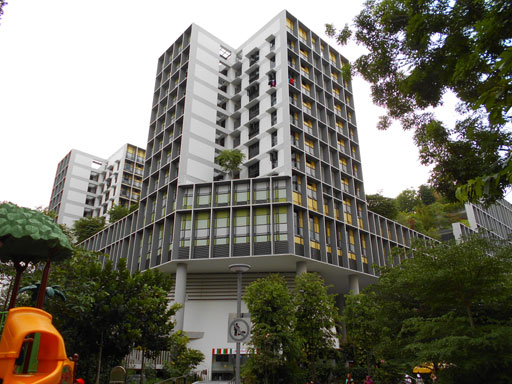
The Kampung features so much greenery that it feels like a garden and indeed the top floor is a community garden! We explored Kampung Admiralty with admiration and hope that this model will be duplicated all over the world.
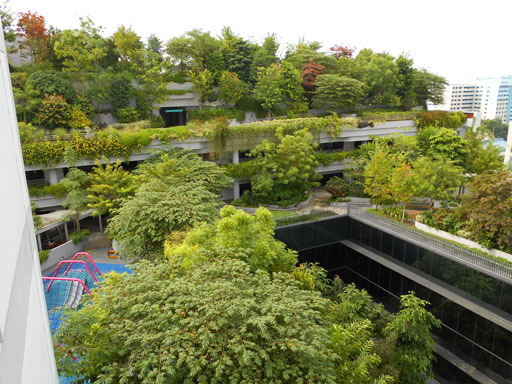
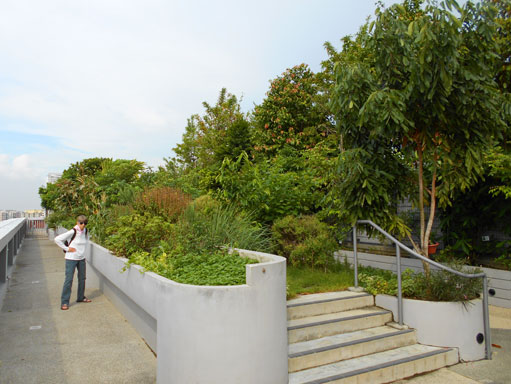
But our visit was not all 'study and work'. We had a few special diversions on our list.
Visit to the historic Raffles Hotel
We arrived to discover that the Hotel was closed for renovation, so a future visit is now high on our list.
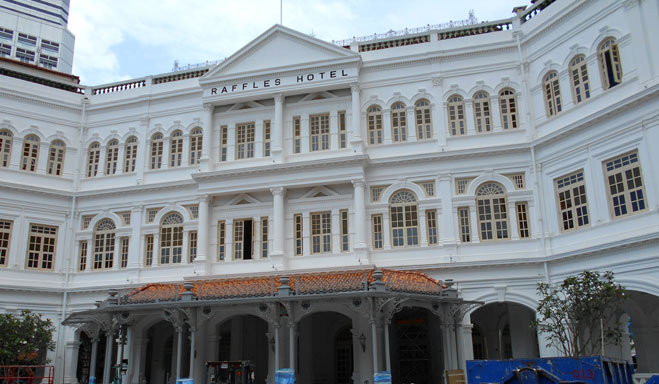
Thankfully, the renovation of the Hotel's famous Long Bar was complete, so were able to visit and enjoy a Singapore Sling amongst the ghosts of Somerset Maughan and his friends that frequented this bar a century ago.
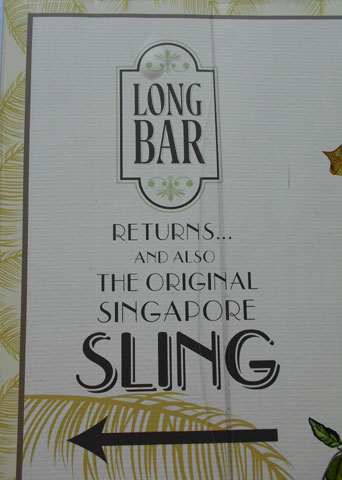
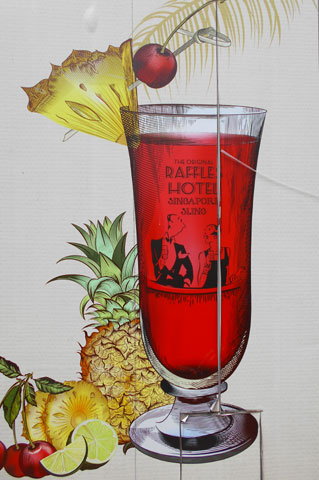
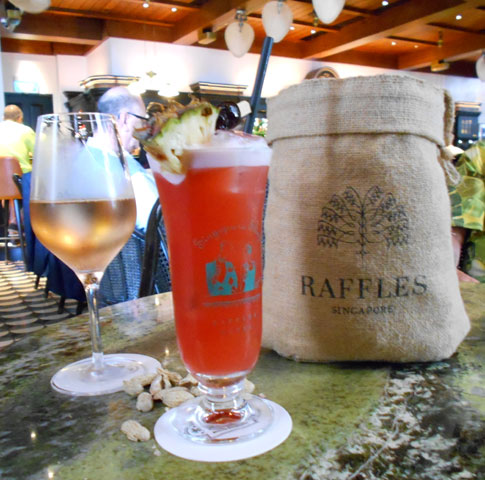
On another evening we visited the verandah of the classy Fullerton Hotel, for a wonderful early supper overlooking the Singapore River.
Conclusions
Based on our research and observations, it became clear that Singapore has benefited immensely from capable and creative leadership at critical periods of it's history.
First, there were Stamford Raffles and William Farquhar who arrived in Singapore in 1819 and subsequently, through negotiations of each man with the rulers of Johor, Singapore, the British East India Company, the British Government and even the Dutch Government, they acquired a portion of Singapore Island to establish a free port. Farquhar, as Resident and Commandant of Singapore, energetically cleared forests and built infrastructure to enable shipping trade to proceed. As the population grew, these men, especially Farquhar established regulations that kept the yards and streets clean and trash in specified locations, the beginning of the Clean City tradition. A series of other actions enabled Singapore to advance rapidly from an insignificant fishing village to a large and prosperous town and major port.
Then, in the 1950s, Lee Kwan Yew began his long rise to leadership of Singapore and to gather the political power as well as a group of capable colleagues to work together to create the City-State we know today. We discovered so many elements of People Friendliness that enable Singaporeans to live, work, learn and play with a multicultural openness and ease that is difficult to comprehend. Undoubtedly, they face challenges that must be met as the world changes just as all cities and states must. We look forward to continuing to learn from their examples and to return for a longer stay to before long!
Click here to return to 'Spring 2019 in Hong Kong and Singapore' page
Click here to return to Our Searching the World page
![]()